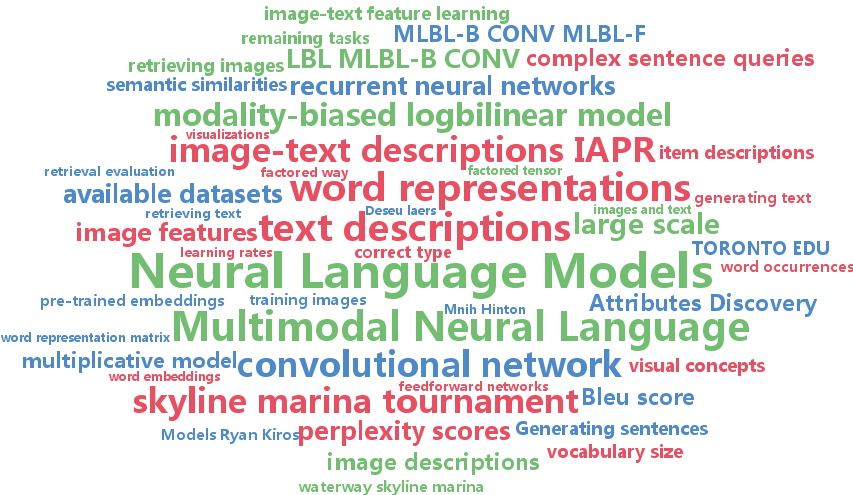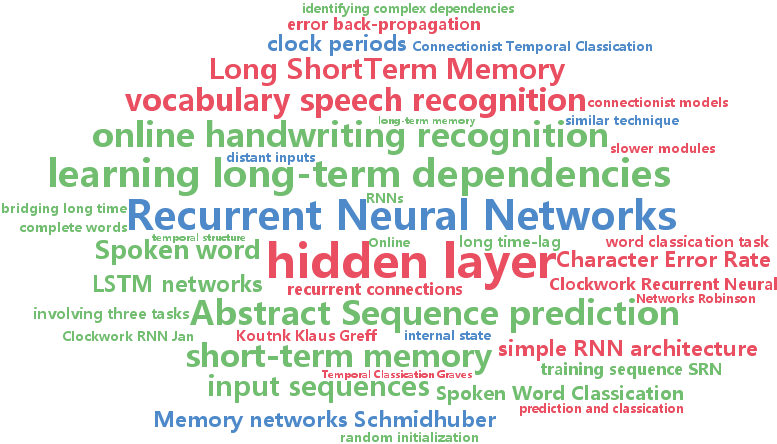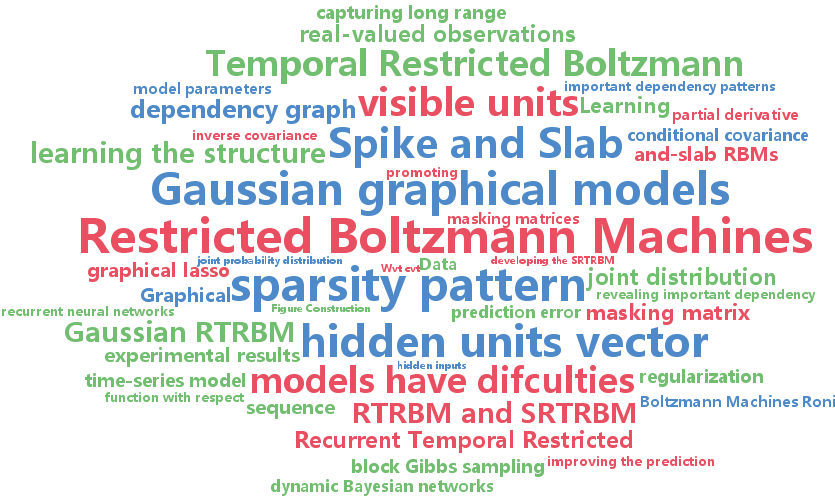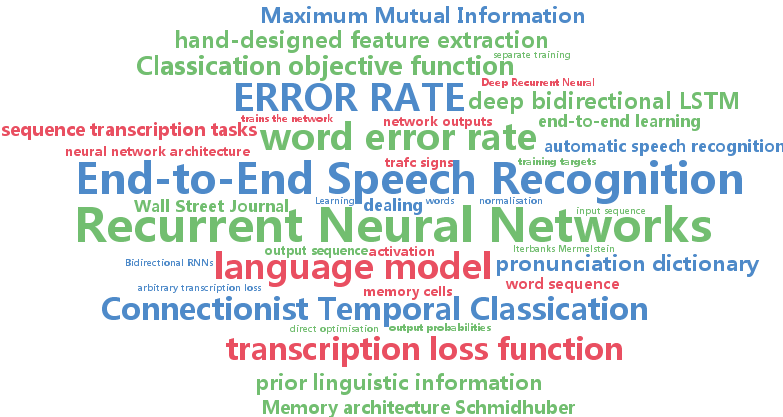recurrent neural networks
-
Ryan Kiros and Ruslan Salakhutdinov and Rich Zemel
Multimodal Neural Language Models (pdf)
We introduce two multimodal neural language models: models of natural language that can be conditioned on other modalities. An image-text multimodal neural language model can be used to retrieve images given complex sentence queries, retrieve phrase descriptions given image queries, as well as generate text conditioned on images. We show that in the case of image-text modelling we can jointly learn word representations and image features by training our models together with a convolutional network. Unlike many of the existing methods, our approach can generate sentence descriptions for images without the use of templates, structured prediction, and/or syntactic trees. While we focus on image-text modelling, our algorithms can be easily applied to other modalities such as audio.
-
Jan Koutnik and Klaus Greff and Faustino Gomez and Juergen Schmidhuber
A Clockwork RNN (pdf)
Sequence prediction and classification are ubiquitous and challenging problems in machine learning that can require identifying complex dependencies between temporally distant inputs. Recurrent Neural Networks (RNNs) have the ability, in theory, to cope with these temporal dependencies by virtue of the short-term memory implemented by their recurrent (feedback) connections. However, in practice they are difficult to train successfully when long-term memory is required. This paper introduces a simple, yet powerful modification to the simple RNN (SRN) architecture, the Clockwork RNN (CW-RNN), in which the hidden layer is partitioned into separate modules, each processing inputs at its own temporal granularity, making computations only at its prescribed clock rate. Rather than making the standard RNN models more complex, CW-RNN reduces the number of SRN parameters, improves the performance significantly in the tasks tested, and speeds up the network evaluation. The network is demonstrated in preliminary experiments involving three tasks: audio signal generation, TIMIT spoken word classification, where it outperforms both SRN and LSTM networks, and online handwriting recognition, where it outperforms SRNs.
-
Roni Mittelman and Benjamin Kuipers and Silvio Savarese and Honglak Lee
Structured Recurrent Temporal Restricted Boltzmann Machines (pdf)
The Recurrent temporal restricted Boltzmann machine (RTRBM) is a probabilistic model for temporal data, that has been shown to effectively capture both short and long-term dependencies in time-series. The topology of the RTRBM graphical model, however, assumes full connectivity between all the pairs of visible and hidden units, therefore ignoring the dependency structure between the different observations. Learning this structure has the potential to not only improve the prediction performance, but it can also reveal important patterns in the data. For example, given an econometric dataset, we could identify interesting dependencies between different market sectors; given a meteorological dataset, we could identify regional weather patterns. In this work we propose a new class of RTRBM, which explicitly uses a dependency graph to model the structure in the problem and to define the energy function. We refer to the new model as the structured RTRBM (SRTRBM). Our technique is related to methods such as graphical lasso, which are used to learn the topology of Gaussian graphical models. We also develop a spike-and-slab version of the RTRBM, and combine it with our method to learn structure in datasets with real valued observations. Our experimental results using synthetic and real datasets, demonstrate that the SRTRBM can improve the prediction performance of the RTRBM, particularly when the number of visible units is large and the size of the training set is small. It also reveals the structure underlying our benchmark datasets.
-
Alex Graves and Navdeep Jaitly
Towards End-To-End Speech Recognition with Recurrent Neural Networks (pdf)
This paper presents a speech recognition system that directly transcribes audio data with text, without requiring an intermediate phonetic representation. The system is based on a combination of the deep bidirectional LSTM recurrent neural network architecture and the Connectionist Temporal Classification objective function. A modification to the objective function is introduced that trains the network to minimise the expectation of an arbitrary transcription loss function. This allows a direct optimisation of the word error rate, even in the absence of a lexicon or language model. The system achieves a word error rate of 27.3% on the Wall Street Journal corpus with no prior linguistic information, 21.9% with only a lexicon of allowed words, and 8.2% with a trigram language model. Combining the network with a baseline system further reduces the error rate to 6.7%.



